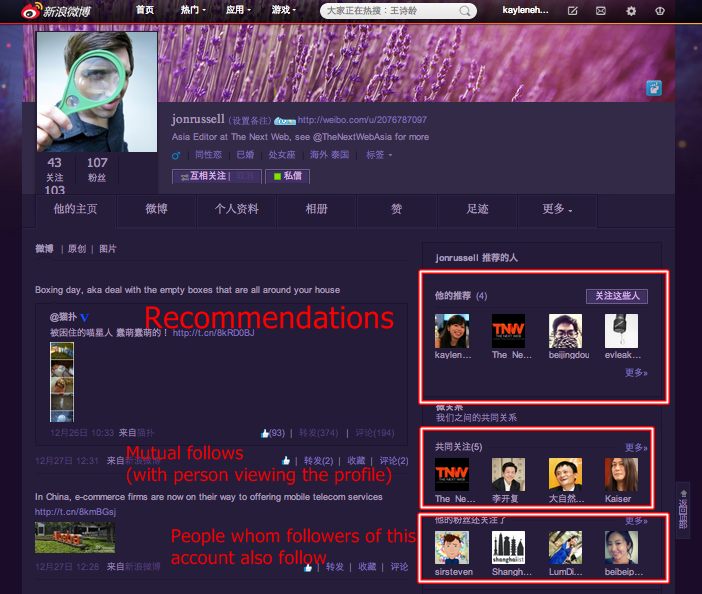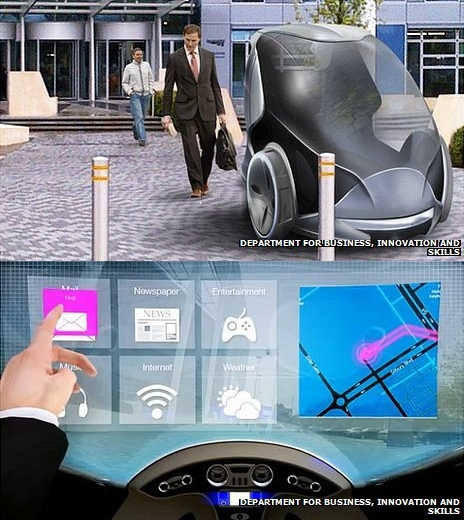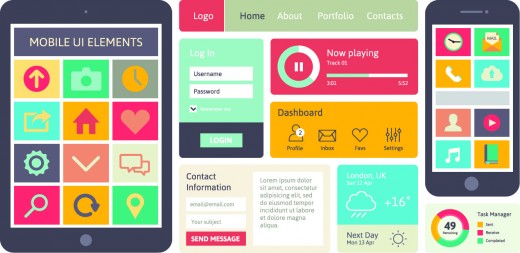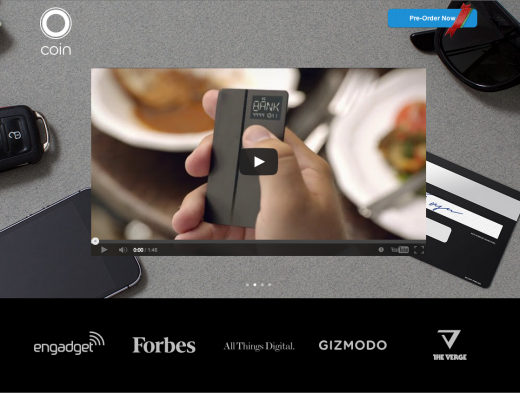The Next Web |
- Don’t miss December’s news from the Eastern European tech scene
- Coinbase launches point-of-sale app to let physical retailers accept payment in Bitcoin
- Chinese e-commerce giant Alibaba is letting users judge disputes between merchants and customers
- Twitter appears to be testing a Sina Weibo-style ‘recommended accounts’ feature
- LG’s future key devices will have a nifty Knock feature to activate the display with a double tap
- Edward Snowden plans to be more active in the media in 2014
- Google is reportedly working to bring an Android-based system into your car
- Unlocking the potential for Big Data in 2014
- 10 Web design trends you can expect to see in 2014
- 43 of the best Android apps launched in 2013
| Don’t miss December’s news from the Eastern European tech scene Posted: 30 Dec 2013 04:04 AM PST  The last month of the year 2013 was expected to be pretty slow on news as usually happens in December, but it actually brought quite a few interesting stories from across Eastern Europe. Check out what you may have missed… If you think I have missed something, or would like to draw my attention to an important story, feel free to ping me in Twitter (@shlema) or by e-mail at shlema@gmail.com. EventsOn the first week of December, two conferences were held at the same time in Eastern Europe. Ukraine's capital Kyiv hosted Startup AddVenture, while in Budapest, Hungary Stretch Conference attracted those interested in the future of leadership and management. Although the latter event was not a usual startup or tech conference, it attracted speakers from big names like Spotify and SoundCloud. Startup AddVenture's traditional competition was conquered by UK's PlayCanvas, which received €25,000 of prize money, and the second place was taken by Ukrainian LeadScanner. At the conference, both startups also announced seed rounds from Dave McClure's 500 Startups. Another Eastern European startup success was seen in Paris, at the major conference LeWeb. Polish company Intelclinic won the competition with their smart sleeping mask NeuroOn, which, as the team claims on their Kickstarter page, allows you to sleep less, but more efficiently. Startups and investorsDecember saw a surprising amount of news stories coming from Eastern European startups, VCs and funds. Here's a list of the ones worth attention:
In the newsThe last month was very active for Russian e-money companies. In early December, Russian Internet giant Yandex introduced the ability to send money by email, while one of its rivals, Money Mail.Ru allowed its users to pay taxes online through its portal. Later, yet another e-payment provider, RBK Money received its payments services authorization in the UK, gearing up for EU expansion. At the same time, bordering Ukraine, where some of local e-currencies have been experiencing major issues with the government, is about to see PayPal officially launching all of its services. The service started its operations fully in Russia three months ago, so the news seems to be a part of a strategy of Eastern expansion. Here's a number of other noteworthy news headlines from Eastern European tech scene:
Facebook vs. VK.com, or Battlefield: RussiaRussia is still one of the few countries in Eastern Europe where Facebook is not the most popular social network. While VK.com, also known as Vkontakte, attracts vast majority of users, Facebook's executive in charge of partnering with developers in Europe, the Middle East and Africa, Julien Codorniou said in a recent interview in Wall Street Journal that "from the platform perspective [driving market share in Russia away from VKontakte to Facebook] is not a priority for us." However, VK's co-founder and CEO Pavel Durov, just a few days after the interview was published, wrote on his VK account (in Russian) that Facebook had blocked the possibility for VK users to cross-post their status updates. In Durov's opinion, Facebook took this step in an attempt to prevent a further decrease in popularity in Russia. According to some of December news stories though, VK.com is going to have problems bigger than competition with Facebook. One of the distinctive features of the social network is that it allows users to upload any music or video, which anyone else would be able to search and stream. It's very popular with users but the legal aspect here is quite tricky. Media reports state that Western European users of VK's mobile app can't search for music anymore, while in Italy the social network was recently blocked by majority of Internet providers for copyright violations. A few days ago, Russian media also reported that international copyright holders are about to file a lawsuit against VK.com and make it get rid of illegal songs. A similar lawsuit in June led to about 7,000 audio tracks being deleted, which predictably triggered a massive backlash by users. On KickstarterDecember saw a few pretty interesting projects from Eastern Europe looking for funding on Kickstarter and AngelList. Check them out; you might want to back them while you can:
So that's the tech news from Eastern Europe in December 2013. One more number to sum it up, literally: the total worth of the funding deals mentioned in the second part of this round-up reaches $45 million! I think this is the best proof that Eastern Europe today is a hot destination worth watching. Have a great rest of the holidays, and don't forget to come back for the next round-up of Eastern European tech news in January. Image credit: Shutterstock, Nadine Rupp/Getty Images This posting includes an audio/video/photo media file: Download Now |
| Coinbase launches point-of-sale app to let physical retailers accept payment in Bitcoin Posted: 30 Dec 2013 12:05 AM PST
Merchant services were previously part of the Coinbase Wallet app – which itself has a new design and other updates — but the new app will only allow payment to be accepted (users cannot withdraw or transfer funds), which Coinbase says makes it ideal for distribution among employees. Both apps are available for Android only, since Apple pulled the iOS app back in November. Coinbase offers a payments API, and allows merchants to accept Bitcoins via email, an embedded button for websites, or a plug-in for e-commerce stores. It charges a one percent fee on transactions, but allows merchants to process their first $1 million in sales without charge. ➤ Coinbase Merchant for Android | Coinbase – Bitcoin Wallet for Android Related: Coinbase now lets you send, buy or sell Bitcoin via SMS Image via George Frey/Getty Images This posting includes an audio/video/photo media file: Download Now |
| Chinese e-commerce giant Alibaba is letting users judge disputes between merchants and customers Posted: 29 Dec 2013 10:53 PM PST 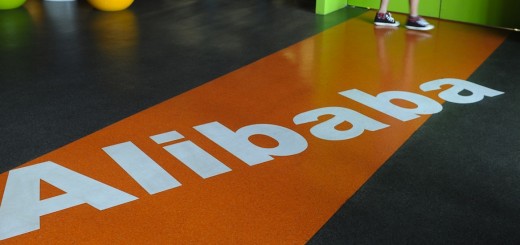 E-commerce is not smooth-sailing all the time — there may be arguments between sellers and buyers that can turn ugly, and lead to dissatisfaction with online shopping. Chinese e-commerce giant Alibaba is trying to solve this — as it officially launched a platform for its Taobao Marketplace that lets a panel of users vote on disputes so they can come to a resolution. There are three categories of disputes that Alibaba's platform currently addresses. They are: cases when a seller is penalized for miscategorization of a product, if a seller defaults on a commitment made such as not shipping within the time specified or not providing free shipping as promised, and lastly transactional disputes. The dispute platform has been in beta for about one year, and an Alibaba spokeswoman says that more than 820,000 members have registered to be panelists — made up of 480,000 buyers and 330,000 sellers. For the past one year, these panelists have reviewed more than 340,000 dispute cases. Each case is voted on by 31 panelists. Of course, the disputes could probably be solved by Taobao's units, but the platform gives rise to more transparency, Alibaba notes. As e-commerce starts to sink its roots deeper into mainstream shopping, the trustworthiness and reliability of transactions and goods becomes even more important. By taking a first step into adopting the concept of a more autonomous court-like setting for judging disputes, Alibaba could be on to something that may be useful for the e-commerce world in general — even out of China. Headline image via Peter Parks/AFP/Getty Images This posting includes an audio/video/photo media file: Download Now |
| Twitter appears to be testing a Sina Weibo-style ‘recommended accounts’ feature Posted: 29 Dec 2013 09:55 PM PST  It's been a year of experimentation from Twitter, and the latest feature that the company is piloting is the option to favorite other users' accounts. Favoriting has taken on a new meaning in recent times. For many users it is more akin to a Facebook 'Like' or an act of acknowledgement rather than the original premise of bookmarking interesting content — but can it be applied to accounts too? Former TNWer Drew Olanoff spotted an option on Twitter for Android, which CNBC's Eli Langer suggests could work like an endorsement tool: i.e. users favorite the top accounts that they recommend other people to follow, like a permanent version of the #followfriday hashtag. It's just a test at this point, and it isn't clear whether users are even notified of account favorites — but you can see how the recommendation model might work by looking at Sina Weibo, the service often known as 'China's Twitter', which lets users prominently display links to accounts they recommend in the top right of the sidebar. Here's an example from my infrequently used Weibo account: Twitter's Isaac Hepworth pointed out how the use of favorites grew massively after the company began notifying users when their tweets had been favorited and, as Langer points out, that has somewhat cannibalized the number of retweets a popular tweet might gain, and making it harder to acquire new users virally. Recommended accounts could bring a new dynamic to discoverability, and, with many Twitter regulars following hundreds/thousands of accounts, it would be a neat way to spotlight your favorites. We reached out to Twitter for comment on the feature, and its potential usage. Headline image via Scott Beale / Laughing Squid This posting includes an audio/video/photo media file: Download Now |
| LG’s future key devices will have a nifty Knock feature to activate the display with a double tap Posted: 29 Dec 2013 08:31 PM PST
The company announced today that the Knock feature will be made a standard in all its future key mobile devices, while its L Series smartphones will get the feature via a global upgrade starting in January. LG Mobile President and CEO Jong-seok Park notes: "No one ever thought that a power button needed to be improved until our engineers wondered why they couldn't turn the entire screen into a power button." Thumbnail image via David Becker/Getty Images, image via LG This posting includes an audio/video/photo media file: Download Now |
| Edward Snowden plans to be more active in the media in 2014 Posted: 29 Dec 2013 07:21 PM PST
Benjamin Wizner of the American Civil Liberties Union, an attorney working with Snowden, says we "can expect to see him engage a little more in the public debate" in 2014, now that Snowden feels his initial job of raising awareness of NSA techniques has been accomplished. Wizner has also revealed that Snowden, who is currently based in Russia, would like to return to the US, but only if charges against him are dropped. "He doesn't believe that the cost of his act of conscience should be a life behind bars," says Wizner. "There are lots of times when people violate the law and society decides for one reason or another to look forward rather than backwards. I think that this is one of those cases." ➤ Snowden Will Speak More in 2014, Adviser Says [Wall Street Journal] Related: Edward Snowden calls for a restoration of privacy in Channel 4′s Alternative Christmas Message Photo via Getty Images This posting includes an audio/video/photo media file: Download Now |
| Google is reportedly working to bring an Android-based system into your car Posted: 29 Dec 2013 06:44 PM PST
The Wall Street Journal reports that Google is working with German carmaker Audi to develop in-car entertainment and information systems based on its Android software — and that plans will be announced at the Consumer Electronics Show in January. There will also reportedly be plans to collaborate with other companies including chip manufacturer Nvidia to work towards having Android as a system available within vehicles, which will let drivers and passengers access music, navigation, apps and services like those on Android smartphones. Google's efforts come as Apple introduced its "iOS in the Car" initiative during its WWDC 2013 keynote in June this year, aiming to give drivers and passengers direct access to the functionalities of iOS devices via native in-car control systems. ➤ Google, Apple Forge Auto Ties [Wall Street Journal] Thumbnail image via Shutterstock, This posting includes an audio/video/photo media file: Download Now |
| Unlocking the potential for Big Data in 2014 Posted: 29 Dec 2013 11:00 AM PST  Martina King is the CEO of Featurespace where she is responsible for the strategic direction and corporate vision at the company. A popular internet meme goes something like this: 'It's 2013: where's my flying car?' The question, asked on t-shirts and coffee mugs around the world, debated on technology forums, or bantered around with friends at a café, is essentially one that asks: Where exactly are the benefits of this 'better future' we all signed up for? The answer is simple: the benefits are in the data. The age of dataFlying cars notwithstanding, 2013 was the year that data and its potential became widely acknowledged. It's also the year that data was demonised—everything from government leaks to questions surrounding privacy and personal security has turned our idea of data from a neutral concept of tiny bits of information to a murky shadow that follows us around whether we want it to or not. There's a bit of irony here: the term itself is Latin for 'gift,' but increasingly more people are beginning to question where, how, and to whom they want to give their data. In a post-PRISM world, lines are drawn between those who see data as a threat, and those who envision it as a way to solve the biggest challenges of our lifetime. In truth, data presents an opportunity to realise incredible positive changes to our lives: the ability to improve the way we live, how we discover and solve problems, and most importantly how we approach and implement solutions that change everything from the way business is conducted to how natural disasters are predicted, prevented, and responded to. Changing our livesUsing data to change our lives isn't some unrealistic dream for the future—in fact, in some ways the idea has been around for quite a while. Meteorological data has been collected in various parts of the world since 3000 BCE; the 19th century introduced a range of library classification methods. And with the holiday season in full swing, let's not forget the ancient Roman census—another example of how data collection and interpretation have enjoyed a long history of impacting every facet of our lives. The difference now is simply one of scale. We are at a turning point for humanity, as for the first time in any civilisation there is enough information being collected to start to apply mathematics to many of our greatest, as yet unsolved, problems. Forget flying cars: data is already enabling scientists to cure disease, predict when we'll get sick, and generate higher crop yields to feed our expanding population. A bit closer to home, you know data is working in your favour when your mobile suggests a better route for the evening drive after a traffic app picks up accidents or delays near your neighbourhood. A new view of the futureBut the proper, safe use data is all about intentions, and the intelligence behind intentions is crucial. Are we determined to use the goldmine at our fingertips in ways that fundamentally improve our future? Imagine: with data analytic tools stepping in to automate the process of understanding vast amounts of information, humans are free to apply our energies to more creative tasks. How much more productive would you be if data were to automate the repetitive, auto-pilot moments of your day? Connected, driverless cars, for example, would take away the stress of the morning rush hour, letting you log on and get ahead of the day, kick back and have a coffee, or work in a little extra playtime with the children. It is no longer a question of whether there is enough data yet, or if technology can process it. For the first time, the answer to both is a resounding 'yes'. Given that data is the key to unlocking solutions for the modern world we've dreamed of, we must be able to see past the Orwellian scaremongering and tap into the huge potential for progress and enhancement that understanding data provides. Unlocking the potentials of dataTo understand this in the real world, look at retailers. On the whole, retailers have embraced data, using it to build a pattern of customers' online shopping habits to improve communications and loyalty. That means retail organisations no longer have to take a stab in the dark as to our preferences and needs based on our age and gender—they can now predict our purchasing patterns before we even decide, giving us personalised offers or product recommendations to encourage good spending habits and completely eliminating the need for guess-work and assumption. Making decisions based on assumptions is how most problems have historically been approached. We tend to decide on solutions that appeal to what a problem looks like, not necessarily what it is. Coming at a solution this way means that the nuances–the human element–tend to get lost: again, people become simply numbers on a page. But it's the nuances that are all important, and although you may have not been looking for them, what you don't know often represents the biggest opportunity. Insight beyond insightA method that flips the traditional approach on its head and gives an approximate answer for the exact problem—like Adaptive Behavioural Analytics—gives you exactly that insight in to the unknown and unexpected. This means that things you weren't necessarily looking for can now be discovered and acted upon. Let's not forget that Columbus wasn't setting out for America! Adaptive Behavioural Analytics is clearing the way for us to approach data safely, with good intentions, and most importantly armed with the right tools to tease out nuances and solve exact problems. Its automated and adaptive characteristics level the playing field for businesses who want the most out of their data: there's no longer a need for a team of scientists to support and maintain complicated analytics. As a result, small companies can make sure they reap the benefits of this insight without spending precious resources on maintaining a data science team—organisations can spot road bumps before they appear, hijack new opportunities before they even occur, predict customer behaviour and habits in order to drive profits and identify fraud before it happens. And the possibilities that data—coupled with the right analytics—can deliver are limitless. Only our imagination draws the boundaries of what we can accomplish, and new applications are becoming feasible every day. Why restrain data's future potential with fear, when the right tools and intentions are driving incredible solutions to global problems? That sounds much more exciting than a jetpack or a flying car—and those who are poised to step into the forefront of this revolution agree. Image credit: Filipchuk Oleg/Shutterstock This posting includes an audio/video/photo media file: Download Now |
| 10 Web design trends you can expect to see in 2014 Posted: 29 Dec 2013 09:00 AM PST December is always a great time to look back on the year that was and the new year that is soon to come. There are many exciting things that 2014 has in store for us who live, work, and produce the World Wide Web we love and cherish. Last year, we looked at the 10 Web design trends for 2013. Many of the trends that were spotted last year are still around today and will undoubtedly take off into 2014. After all, that's why they are called trends and not fads, as trends tend to stick around for a few years while fads are only hot for a very short time. So while 2014 is knocking on the door, let's look ahead and see what kind of new(ish) Web design trends we can look for and be inspired by come the new year. 1. Non-boring typographyA typography-lover myself, it's great to see more designers experimenting with different types of type. One trend with type we can expect to see in 2014 is fonts with personality. "Fonts with personality" are fonts that feel like they can stand on their own. They are not your standard serif or san-serif font (ahem, Helvetica). Designers are starting to find different fonts to add to their arsenal that add a little personality and uniqueness to their designs. For instance, check out Stuff and Nonsense's new website design above. They could have used any old serif font, but they picked a beautiful serif font that keeps it professional but with a side of personality. We expect to see many more websites in 2014 getting away from very simple and overused typefaces and finding some with personality. 2. Flat designOh Apple, how we love thee. Last year we said that more than likely, Apple was going to shake its Skeuomorphism, and boy did they ever. With the release of iOS7 came the design aesthetic most commonly known as "flat design." While dropping drop shadows and gradients often seems like a good idea in some cases to give a more updated look to things, Apple took it to a whole other level by dropping pretty much any design element it could. Apple has for a long time been a trendsetter, and what Apple does, the rest of the world seems to follow. iOS7 has been out for a while and already there are a flood of sites coming online every day with new "flat" designs. We don't anticipate this trend ending in 2014. 3. Large hero areas quickly killing slidersIf you asked us what is the number 1 trend in Web design today, this would be it. Large hero areas (the "intro" area, often an image with a little amount of text, at the top of a website – a borrowed term from print design) on website home pages are running rampant (for example, most of the sites featured in Line25′s "Sites of the Week" weekly posts) – and it is a trend we don't see going away either in 2014. They are quickly taking over real estate on websites where sliders used to reside (until proven that they don't work). Either it be a simple blurred photo in the background with a heading centered in the middle, or a more elaborate one such as the illustrated hero area in the Realtii.com site above, hero areas are quickly replacing sliders as the new attention-grabbers, and they are becoming increasingly creative and elaborate. 4. Heavier focus on mobileNow that responsive Web design is becoming more common place, we are starting to see websites dig deeper into our mobile lifestyles. Designers are increasingly working on keeping their sites functioning on mobile devices, but developers are taking it a step further to help along with the fact that so many more devices are accessing the Web, and so many more users are using their phones to browse the Web. Wondering what some things are being done? Integration with social media, asking for email subscriptions, long scrolling sites (see below), and fast loading sites all help make the mobile Web a more friendlier place. 5. Videos in place of textWhy read about it when you can watch it? Something else you will start seeing all over the Web (especially in hero areas) are videos. Even Coin, the popular new device, is even utilizing a video in its hero area (see above). Videos are becoming easier to produce, and easier to share not on your website, but on social media as well. While some may argue that videos don't belong on a website home page due to the large amount of data they take to load and run (especially on mobile devices and internet with data caps), videos are an effective way to communicate something technical or new when words just don't cut it. Plus, many video services such as YouTube allow you to track how many views it got, allowing you to better plan your content for your website. 6. Long scrolling sitesWe've become comfortable with scrolling through a website to read and find information, and now with websites using more design techniques such as increased white space and responsive Web design, long scrolling sites are starting to appear again. Several years ago, it was common to have long scrolling sites that where slammed with content. Well, now we are seeing long scrolling websites but the content is more organized and in a much easier format to digest. Take for instance Macaw's website (above). Its site organizes content well, and in turn they have a long scrolling site. It doesn't seem boring because the layout changes up throughout, and for most users, they don't realize how far they are actually scrolling. 7. Simple color schemesWe can't have a post on design trends without talking about color. In 2014, we will see a lot more website with very simple color schemes. And by simple, we mean really only one or two colors. Take for instance the UIKit site above. That site has only one hue: blue (in design and art, white and black aren't considered colors, but neutrals). The use of a more simple color scheme seems to come with flat design (discussed above), but not always. The site above uses blue predominately throughout the design, but it is the only color you see. Some websites being launched now are using very little color, or even forgoing color all together. White, black, and everything in between are popular color schemes now, and adding just a hit of another color, such as red, adds drama and impact – all things that garnish attention when used in the right way. 8. Simplified contentWe've kind of hit on this throughout this post, but while 2013 seemed to be the year of King Content, 2014 will keep the king humble and down to earth. Simpler content will dominate 2014 and beyond as we design our websites. Simplified content means short bursts of content, a la Twitter style. Over the years as a population, our attention spans have become shorter, so designers have compensated for that by putting content in short bursts instead of long narratives. Not many areas on websites these days (except blog posts) have more than about 250 characters. It is because it is easier and faster to read for users who like to scan the page. 9. Dropping the sidebarThis is more for blog or magazine-type sites, but many of these sites are experimenting with dropping the sidebar all together. This allows for a more visual impact with content (and easier responsive Web development). Imagine this: you reading an article without things flashing, crowding, or otherwise buying for your attention. Designers understand this and are working to make your reading experience more pleasant by getting rid of these distractions and expanding the content of the article to take over the page. Not sure about you, but this is a welcome change and a trend that we hope is here to stay. 10. Manipulated imageryWhile it is easy to just throw any old photo on your site, it is a little more difficult to manipulate it into something different. In 2014, we will see more images that have things such as color overlays, blurred images, or even images that are reminiscent of Instagram images with filters. For instance, the Seattle Cider Co. uses a large image in their hero area (see hero discussion above), but not just any photo. They've manipulated the image to give an antique and rustic feel to match with the rest of the site. 11. Bonus: Crazy, sexy, cool stuffThis will be the trend that we hope never ever dies. As the Web grows and becomes more involved, and as more things are developed, designers and Web developers are going to get their hands on them. If you thought parallax scrolling techniques were cool, just you wait. Expect to see many more things hit the Web in 2014, such as the use of HTML5 to animate different parts of a site. For example, Tobi's Story's website (image above) is a great use of really cool things done in a great way. The subtle scrolling timed in tune with animation is the cool stuff we want to see. We love the cool things, and we love it even more when we get to use it. Just, do us all a favor, don't go overboard. This posting includes an audio/video/photo media file: Download Now |
| 43 of the best Android apps launched in 2013 Posted: 29 Dec 2013 07:00 AM PST  In a year that saw Google Play finally pass the one million milestone in terms of live apps, it's fair to say there's a deluge of file-managers, smart calendars, funky cameras, games and more to sift through to get to the real gems. So here's a quick snapshot of some of the more notable apps to launch for Android in 2013. For the most part, these are all available globally, though a handful are restricted to certain markets – these are clearly marked. In no particular order… PRODUCTIVITYCalTo-do list startup Any.DO spun out a brand new smart calendar app called Cal this year, representing the "first in a suite" of standalone apps from the Israel-based company. More to come from them soon, we expect.
Cal syncs with all the major calendars, including Google and Exchange, but it's when you start adding items to your calendar where things get interesting. It asks to use your current location, so it can deliver additional details for each entry. For example, if you enter a location name such as 'Concert at Finsbury Park', Cal detects it. It will even plot it out on a map for you and offer to help you navigate your way to any event. ➤ Cal Buy Me a PieAfter seeing success on the iPhone, Buy Me a Pie finally arrived for Android in August, delivering a sweet way of creating shopping lists. These lists can be shared via SMS, email or via other apps installed on a device. It has a cloud synchronization feature, so if you're an iOS and Android user, you can sync lists between accounts and devices. SimplenoteSimplenote, the popular productivity app acquired by WordPress-owner Automattic, finally landed on Android earlier this year. Like the iOS version, the Android app is free, but those who download it can get started from the get-go, without the need to create a Simplenote account. Users who do go to the trouble of signing up and logging in will see their notes synced and maintained across the iOS, Kindle and Web versions of the service. ChirpChirp, the app that lets you share links and photos using short bursts of 'digital birdsong', finally landed on Android in September. Rather than sending pictures via messages, emails, social networks or storage services like Dropbox, Chirp lets you send links to webpages, pictures and other content to multiple people at once, provided they also have the Chirp app installed. ➤ Chirp FindItA little over two months after FindIt first launched for iPhone, the email- and file-search app quietly rolled out on Android too. It connects with Gmail, Google Drive and Dropbox, though there is scope for opening this up to additional cloud-based services in the future.With FindIt, you can opt to search for things by person, time or file-type and, crucially, you can search universally across all compatible services in one fell swoop. ➤ FindIt ThemerThemer enables you to completely transform your Android phone in seconds. Currently still in open beta, Themer offers much more than just skins – the 'themes' give your phone a whole new identity. To access it, simply enter your email address here and you'll instantly receive your access code. ➤ Themer Aviate [Invite only] |
| You are subscribed to email updates from The Next Web To stop receiving these emails, you may unsubscribe now. | Email delivery powered by Google |
| Google Inc., 20 West Kinzie, Chicago IL USA 60610 | |



